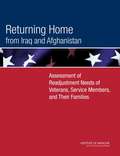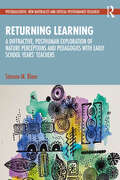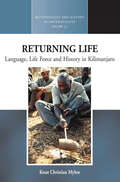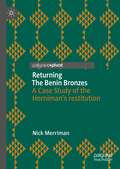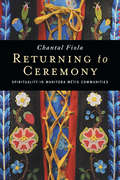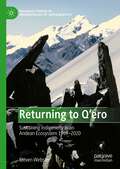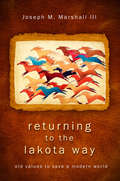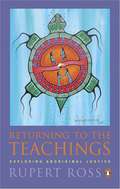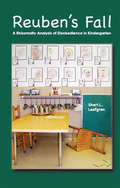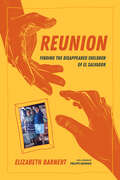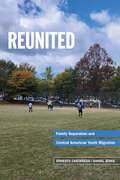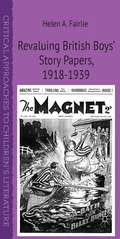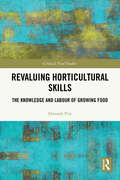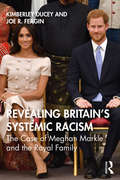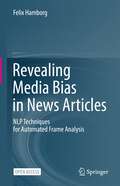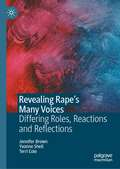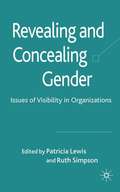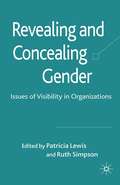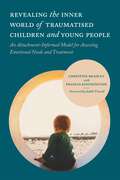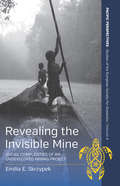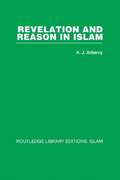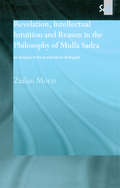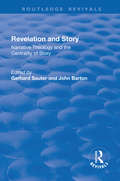- Table View
- List View
Returning Home from Iraq and Afghanistan
by Institute of MedicineAs of December 2012, Operation Enduring Freedom (OEF) in Afghanistan and Operation Iraqi Freedom (OIF) in Iraq have resulted in the deployment of about 2. 2 million troops; there have been 2,222 US fatalities in OEF and Operation New Dawn (OND)1 and 4,422 in OIF. The numbers of wounded US troops exceed 16,000 in Afghanistan and 32,000 in Iraq. In addition to deaths and morbidity, the operations have unforeseen consequences that are yet to be fully understood. In contrast with previous conflicts, the all-volunteer military has experienced numerous deployments of individual service members; has seen increased deployments of women, parents of young children, and reserve and National Guard troops; and in some cases has been subject to longer deployments and shorter times at home between deployments. Numerous reports in the popular press have made the public aware of issues that have pointed to the difficulty of military personnel in readjusting after returning from Iraq and Afghanistan. Many of those who have served in OEF and OIF readjust with few difficulties, but others have problems in readjusting to home, reconnecting with family members, finding employment, and returning to school. In response to the return of large numbers of veterans from Iraq and Afghanistan with physical-health and mental-health problems and to the growing readjustment needs of active duty service members, veterans, and their family members, Congress included Section 1661 of the National Defense Authorization Act for fiscal year 2008. That section required the secretary of defense, in consultation with the secretary of veterans affairs, to enter into an agreement with the National Academies for a study of the physical-health, mental-health, and other readjustment needs of members and former members of the armed forces who were deployed in OIF or OEF, their families, and their communities as a result of such deployment. The study consisted of two phases. The Phase 1 task was to conduct a preliminary assessment. The Phase 2 task was to provide a comprehensive assessment of the physical, psychologic, social, and economic effects of deployment on and identification of gaps in care for members and former members, their families, and their communities. The Phase 1 report was completed in March 2010 and delivered to the Department of Defense (DOD), the Department of Veterans Affairs (VA), and the relevant committees of the House of Representatives and the Senate. The secretaries of DOD and VA responded to the Phase 1 report in September 2010. Returning Home from Iraq and Afghanistan: Assessment of Readjustment Needs of Veterans, Service Members, and Their Families fulfills the requirement for Phase 2.
Returning Learning: A Diffractive, Posthuman Exploration of Nature Perceptions and Pedagogies with Early School Years’ Teachers (Postqualitative, New Materialist and Critical Posthumanist Research)
by Simone M. BlomReturning Learning explores early school years teachers’ perceptions of nature and how this informs their pedagogy through a posthuman theoretical framework. The theoretical framework is purposefully designed to disrupt dichotomies and reject abuse to marginalised others. In doing so, this book offers a reconceptualisation of learning in environmental education, and education more broadly.The posthuman theoretical framework is a transdisciplinary offering informed by material-discursive practices, affective atmospheres, and childhoodnature. The theoretical framework and transqualitative methodology support diffractive ethnographic methods where data are generated through an iterative and entangled data collection and data analysis process. This process is presented as a series of "diffractive data entanglements" that explore teachers’ perceptions of nature, their pedagogical practices, and the implications of these data through a posthuman framing. These non-conventional approaches to undertaking research are the foundation for this book that listens to teacher’s voices by conducting research with teachers rather than to teachers.Through a deep exploration into the intricacies of everyday classroom practices and happenings, this book privileges the voices of the teachers and the nonhuman, thus the response-ability of teachers to their students and the planet, is re-turned. It will be of interest to researchers who are interested in creative and innovative theories and methodologies as well as those studying environmental education and other pedagogical studies as part of their courses.
Returning Life: Language, Life Force and History in Kilimanjaro (Methodology & History in Anthropology #32)
by Knut Christian MyhreA group of Chagga-speaking men descend the slopes of Mount Kilimanjaro to butcher animals and pour milk, beer, and blood on the ground, requesting rain for their continued existence. Returning Life explores how this event engages activities where life force is transferred and transformed to afford and affect beings of different kinds. Historical sources demonstrate how the phenomenon of life force encompasses coffee cash-cropping, Catholic Christianity, and colonial and post-colonial rule, and features in cognate languages from throughout the area. As this vivid ethnography explores how life projects through beings of different kinds, it brings to life concepts and practices that extend through time and space, transcending established analytics.
Returning The Benin Bronzes: A Case Study of the Horniman’s restitution
by Nick MerrimanThis book offers a detailed case study of the transfer of ownership to Nigeria in November 2022 of the 72 artworks in the Horniman’s collections looted by the British from Benin City in 1897, as an occasion to explore the current state of the issue of restitution of cultural objects. It argues that we are at a tipping point, where decades of debate but little action about restitution is now changing to a period when at least the most egregious examples of colonial looting are being addressed. It summarises the key issues involved in these returns, outlines the processes and procedures undertaken by the Horniman, and offers recommendations and reflections for the future.
Returning to Ceremony: Spirituality in Manitoba Métis Communities
by Chantal FiolaReturning to Ceremony is the follow-up to Chantal Fiola’s award-winning Rekindling the Sacred Fire and continues her ground-breaking examination of Métis spirituality, debunking stereotypes such as “all Métis people are Catholic,” and “Métis people do not go to ceremonies.” Fiola finds that, among the Métis, spirituality exists on a continuum of Indigenous and Christian traditions, and that Métis spirituality includes ceremonies. For some Métis, it is a historical continuation of the relationships their ancestral communities have had with ceremonies since time immemorial, and for others, it is a homecoming – a return to ceremony after some time away. Fiola employs a Métis-specific and community-centred methodology to gather evidence from archives, priests’ correspondence, oral history, storytelling, and literature. With assistance from six Métis community researchers, Fiola listened to stories and experiences shared by thirty-two Métis from six Manitoba Métis communities that are at the heart of this book. They offer insight into their families’ relationships with land, community, culture, and religion, including factors that inhibit or nurture connection to ceremonies such as sweat lodge, Sundance, and the Midewiwin. Valuable profiles emerge for six historic Red River Métis communities (Duck Bay, Camperville, St Laurent, St François-Xavier, Ste Anne, and Lorette), providing a clearer understanding of identity, culture, and spirituality that uphold Métis Nation sovereignty.
Returning to Q'ero: Sustaining Indigeneity in an Andean Ecosystem 1969-2020 (Palgrave Studies in Anthropology of Sustainability)
by Steven WebsterIn this book, social anthropologist Steven Webster provides an ethnohistory of sustainability among the indigenous Andean community of Hatun Q’ero since the 1960s. He first revisits his detailed ecological research among the remote Q’ero in the high Andes of Southern Peru in 1969–1970 and 1977. At that time, Q'ero was a community comprised of several hamlets in converging valleys based primarily on alpaca herding at about 4,300 meters, and composed of about 400 persons in about 80 families. He then relies on the few ethnographies by other anthropologists to document changes in Hatun Q'ero by 2020 , spanning 1980-90s when the nation was immersed in agrarian reform followed by virtual civil war between Maoist guerrillas, the government, and the highland peasantry. Through all of these ideological and political-economic developments the sustainability of Q'ero as an integral ecological and social community as well as a famously Incaic cultural tradition becomes a global as well as national issue. This book argues that while the commercial expansion of ceremonial and shamanist tourism can be seen as extractivist similar to industrial mining, the assertive form of independence characteristic of the Q'eros appears to remain sustainable in the face of both these extractive threats. While the Q'ero community is internally reinforced by their reciprocal relationship with the same non-human forces these forms of extraction seek to exploit, they are externally reinforced by the global as well as national rise of indigeneity movements. Ironically, given the moral force developed in some aspects of shamanist tourism, it can even be argued that it supports environmental sustainability against climate change, globally as well as in Q'ero. This book analyzes the increasing importance of indigeneity in the national politics of Peru as well as the other Andean nations in the last few decades, but it remains to set this form of identity politics in its wider “intersectional” context of social class and ethnic conflict in the Andes.
Returning to the Lakota Way: Old Values To Save A Modern World
by Joseph M. MarshallReturning to the Lakota Way immerses us once again in the world of the Lakota Sioux through the beautiful storytelling and deep insight of Joseph Marshall’s writing. Relaying traditional tales that have been passed down over generations, Marshall takes us on an inspiring journey that will help us better understand the world around us and our place in it.The teaching stories found in each chapter provide lessons that open our eyes to universal qualities and practices passed down over many generations. From the hunting adventures of the raven and the wolf, we discover the importance of tolerance; the actions of the grasshopper highlight the value of patience; and the experiences of a young man named Walks Alone show us the benefit of silence and turning within. Speaking to these and other traits, such as faith and selflessness, Marshall helps us see our own lives more clearly using time-honored tales interspersed with stories from his own life growing up on the Rosebud Sioux Indian Reservation in South Dakota. In his work, we find a clear example of how the wisdom of the past has relevance and meaning in the world of today.
Returning to the Teachings: Exploring Aboriginal Justice
by Rupert RossReturning to the Teachings is about Aboriginal justice and much more, speaking not only to our minds, but also to our hearts and spirits. Above all, it stands as a search for the values and visions that give life its significance and that any justice system, Aboriginal or otherwise, must serve and respect.
Reuben's Fall: A Rhizomatic Analysis of Disobedience in Kindergarten (International Institute for Qualitative Methodology Series #12)
by Sheri L LeafgrenThis study offers a lens on two kindergarten classrooms, examining moments of disobedience as children interacted with children, their teachers, and the space and time elements of the classroom environments. Through Eisner’s educational criticism, author Sherry Leafgren also examines the elements of school, kindergarten and teachers within the spaces of their intersections with the children. While past research has directed our attention to addressing the problem of classroom disobedience, Leafgren provides an opportunity and means to view these familiar actions through fresh lenses of possibilities. Predicated by an event in the researcher’s teaching life, she utilizes Deleuze and Guattari’s rhizoanalysis to openly seek lateral paths of understanding by linking and folding the findings with texts other than those that would be normally used toward developing new understandings and questions regarding children’s disobediences. An earlier version of this book was awarded the distinguished dissertation award from the International Institute for Qualitative Methodology.
Reunion: Finding the Disappeared Children of El Salvador
by Elizabeth BarnertThis captivating ethnography reveals the immediate and persisting impact of forced family separations and the eventual reunifications in communities affected by El Salvador's civil war. In 2005, medical student Elizabeth Barnert traveled to El Salvador to build a DNA bank for reuniting families forcibly separated during the Salvadoran civil war. Based on fifteen years of interviews and field notes, Reunion chronicles families' experiences with military attacks, child disappearances, and family separations, the joy of reunion and the arduous process of reintegration. Barnert works alongside Jesuit priest and Pro-Búsqueda founder Father Jon Cortina, former rebel fighters, and reformed gang members. She meets an eight-year-old journeying north to reunite with her mother and a young woman returning to El Salvador twenty years after her adoption abroad. Reunion includes a foreword by renowned anthropologist Philippe Bourgois, along with his firsthand account of fleeing a Salvadoran military raid, and never-before-published photos and children's drawings from the war. Told through the voices of activists and survivors, this groundbreaking ethnography illuminates the cycles of poverty and violence driving immigration and ongoing separations around the world.
Reunited: Family Separation and Central American Youth Migration
by Ernesto Castañeda Daniel JenksIn the second decade of the twenty-first century, an increasing number of children from El Salvador, Honduras, and Guatemala began arriving without parents at the U.S.-Mexico border. In many cases, the parents had left for the United States years earlier to earn money that they could send back home. In Reunited sociologists Ernesto Castañeda and Daniel Jenks explain the reasons for Central American youths’ migration, describe the journey, and document how the young migrants experience separation from and subsequent reunification with their families. In interviews with Central American youth, their sponsors, and social services practitioners in and around Washington, D.C., Castañeda and Jenks find that Central American minors migrate on their own mainly for three reasons: gang violence, lack of educational and economic opportunity, and a longing for family reunification. The authors note that youth who feel comfortable leaving and have feelings of belonging upon arrival integrate quickly and easily while those who experience trauma in their home countries and on their way to the United States face more challenges. Castañeda and Jenks recount these young migrants’ journey from Central America to the U.S. border, detailing the youths’ difficulties passing through Mexico, proving to U.S. Customs and Border Protection officials that they have a legitimate fear of returning or are victims of trafficking, and staying in shelters while their sponsorship, placement, and departure are arranged. The authors also describe the tensions the youth face when they reunite with family members they may view as strangers. Despite their biological, emotional, and financial bonds to these relatives, the youth must learn how to relate to new authority figures and decide whether or how to follow their rules. The experience of migrating can have a lasting effect on the mental health of young migrants, Castañeda and Jenks note. Although the authors find that Central American youths’ mental health improves after migrating to the United States, the young migrants remain at risk of further problems. They are likely to have lived through traumatizing experiences that inhibit their integration. Difficulty integrating, in turn, creates new stressors that exacerbate PTSD, depression, and anxiety. Consequently, schools and social service organizations are critical, the authors argue, for enhancing youth migrants’ sense of belonging and their integration into their new communities. Bilingual programs, Spanish-speaking PTA groups, message boards, mentoring of immigrant children, and after-school programs for members of reunited families are all integral in supporting immigrant youth as they learn English, finish high school, apply to college, and find jobs. Offering a complex exploration of youth migration and family reunification, Reunited provides a moving account of how young Central American migrants make the journey north and ultimately reintegrate with their families in the United States.
Reuse, Misuse, Abuse: The Ethics of Audiovisual Appropriation in the Digital Era
by Jaimie BaronIn contemporary culture, existing audiovisual recordings are constantly reused and repurposed for various ends, raising questions regarding the ethics of such appropriations, particularly when the recording depicts actual people and events. Every reuse of a preexisting recording is, on some level, a misuse in that it was not intended or at least anticipated by the original maker, but not all misuses are necessarily unethical. In fact, there are many instances of productive misuse that seem justified. At the same time, there are other instances in which the misuse shades into abuse. Documentary scholars have long engaged with the question of the ethical responsibility of documentary makers in relation to their subjects. But what happens when this responsibility is set at a remove, when the recording already exists for the taking and repurposing? Reuse, Misuse and Abuse surveys a range of contemporary films and videos that appropriate preexisting footage and attempts to theorize their ethical implications.
Revaluing British Boys’ Story Papers, 1918–1939
by Helen A. FairlieThis book explores the phenomenon of the story paper, the meanings and values children took from their reading, and the responses of adults to their reading choices. It argues for the revaluing of the story paper in the inter-war years, giving the genre a pivotal role in the development of children's literature.
Revaluing Horticultural Skills: The Knowledge and Labour of Growing Food (Critical Food Studies)
by Hannah PittThis book highlights the value and skill of horticultural work through stories of food cultivation. It examines the difficulties that arise from the perception that this type of activity is unskilled and the importance of acknowledging the expertise involved in growing food.The book provides a rare focus on horticulture as a vital part of agri-food systems, offering a social science perspective on the sector’s current and past characteristics. It presents new primary research into horticultural work and workers across UK food growing, using close attention to their abilities to highlight the depth of their knowledge and learning. This is set in the context of global agri-food regimes which press producers to seek ever more precarious labour, undermining food justice. By examining these in the context of internationally connected supply chains, it characterises injustices which recur globally and across food system labour. The conceptual argument starts from an ecological definition of skill as a social practice embedded within its socio-economic landscape, developing this perspective beyond its association with artisanal contexts. Together the empirical and conceptual materials highlight the fallacy of discourse which tends to individualise skill and the challenges around recruitment into food production. To counter this, the book proposes a more collective approach to fostering healthy skills ecosystems, reaching towards commoning through examples of horticultural communities seeking this in the meantime.It will appeal to postgraduates, researchers and professionals interested in food systems, their workers and related topics of horticultural education, training and human resources, labour, migration and politics of injustice. It draws on perspectives from rural studies, human geography and sociology and connects with international debates in these fields. Food focused scholars and activists will find data and insights to support calls for better work in food systems.
Revaluing Renaissance Art (Routledge Revivals)
by Gabriele Neher and Rupert ShepherdThis title was first published in 2000: Michelangelo gave his painting of "Leda and the Swan" to an apprentice rather than hand it over to the emissary of the Duke of Ferrar, who had commissioned it. He was apparently disgusted by the failure of the emissary - who was probably more used to buying pigs than discussing art - to accord the picture and the artist the value they deserved. Any discussion of works of art and material culture implicitly assigns them a set of values. Whether these values be monetary, cultural or religious, they tend to constrict the ways in which such works can be discussed. The variety of potential forms of valuation becomes particularly apparent during the Italian Renaissance, when relations between the visual arts and humanistic studies were undergoing rapid changes against an equally fluid social, economic and political background. In this volume, 13 scholars explicitly examine some of the complex ways in which a variety of values might be associated with Italian Renaissance material culture. Papers range from a consideration of the basic values of the materials employed by artists, to the manifestation of cultural values in attitudes to dress and domestic devotion. By illuminating some of the ways in which values were constructed, they provide a broader context within which to evaluate Renaissance material culture.
Revealing Britain’s Systemic Racism: The Case of Meghan Markle and the Royal Family
by Joe R. Feagin Kimberley DuceyRevealing Britain’s Systemic Racism applies an existing scholarly paradigm (systemic racism and the white racial frame) to assess the implications of Markle’s entry and place in the British royal family, including an analysis that bears on visual and material culture. The white racial frame, as it manifests in the UK, represents an important lens through which to map and examine contemporary racism and related inequities. By questioning the long-held, but largely anecdotal, beliefs about racial progressiveness in the UK, the authors provide an original counter-narrative about how Markle’s experiences as a biracial member of the royal family can help illumine contemporary forms of racism in Britain. Revealing Britain’s Systemic Racism identifies and documents the plethora of ways systemic racism continues to shape ecological spaces in the UK. Kimberley Ducey and Joe R. Feagin challenge romanticized notions of racial inclusivity by applying Feagin’s long-established work, aiming to make a unique and significant contribution to literature in sociology and in various other disciplines.
Revealing Media Bias in News Articles: NLP Techniques for Automated Frame Analysis
by Felix HamborgThis open access book presents an interdisciplinary approach to reveal biases in English news articles reporting on a given political event. The approach named person-oriented framing analysis identifies the coverage’s different perspectives on the event by assessing how articles portray the persons involved in the event. In contrast to prior automated approaches, the identified frames are more meaningful and substantially present in person-oriented news coverage. The book is structured in seven chapters: Chapter 1 presents a few of the severe problems caused by slanted news coverage and identifies the research gap that motivated the research described in this thesis. Chapter 2 discusses manual analysis concepts and exemplary studies from the social sciences and automated approaches, mostly from computer science and computational linguistics, to analyze and reveal media bias. This way, it identifies the strengths and weaknesses of current approaches for identifying and revealing media bias. Chapter 3 discusses the solution design space to address the identified research gap and introduces person-oriented framing analysis (PFA), a new approach to identify substantial frames and to reveal slanted news coverage. Chapters 4 and 5 detail target concept analysis and frame identification, the first and second component of PFA. Chapter 5 also introduces the first large-scale dataset and a novel model for target-dependent sentiment classification (TSC) in the news domain. Eventually, Chapter 6 introduces Newsalyze, a prototype system to reveal biases to non-expert news consumers by using the PFA approach. In the end, Chapter 7 summarizes the thesis and discusses the strengths and weaknesses of the thesis to derive ideas for future research on media bias. This book mainly targets researchers and graduate students from computer science, computational linguistics, political science, and further social sciences who want to get an overview of the relevant state of the art in the other related disciplines and understand and tackle the issue of bias from a more effective, interdisciplinary viewpoint.
Revealing Rape’s Many Voices: Differing Roles, Reactions and Reflections
by Jennifer Brown Yvonne Shell Terri ColeBy extending the cast list of roles implicated in rape’s hidden sphere of harm, this book attentively listens to experiential voices of complainant/witnesses, suspect/accused, police, lawyers, judges and jurors, therapists, advocates, partners, parents, family and friends during the criminal justice journey. Highlighting good and bad practices, it proposes a paradigm shift for inculcating policy reform, arguing the case for implementation science as a framework for embedding change. The book will be of interest to those involved in the policy, practice and delivery of criminal justice, the support and voluntary sector as well as giving valuable insight to students of forensic and investigative psychology, criminology, law, social policy, gender studies the new policing apprenticeship degree programmes.
Revealing and Concealing Gender
by Ruth Simpson Patricia LewisIssues of visibility and invisibility are becoming increasingly apparent in gender research in organizations. This book will not only further develop current theoretical ideas around being seen and unseen within organizations, but will also provide us with the opportunity to problematize the concepts of visibility and invisibility.
Revealing and Concealing Gender: Issues of Visibility in Organizations
by P. Lewis R. SimpsonIssues of visibility and invisibility are becoming increasingly apparent in gender research in organizations. This book will not only further develop current theoretical ideas around being seen and unseen within organizations, but will also provide us with the opportunity to problematize the concepts of visibility and invisibility.
Revealing the Inner World of Traumatised Children and Young People: An Attachment-Informed Model for Assessing Emotional Needs and Treatment
by Jonathan Stanley Christine Bradley Francia Kinchington Judith Trowell Dr Alistair Cooper John Diamond John WhitwellBringing together the latest research and theory about a child's inner world and the impact of the world around them, this is a guide to understanding and responding to the emotional needs of traumatised children. Founded on the principle that traumatised children do not have a secure sense of self and therefore cannot relate to the outside world without becoming overwhelmed, this book brings psychoanalytic and psychodynamic understandings of child psychology together with current neuroscience and trauma theory. At the heart of the book is an attachment-informed assessment model and guidance for treatment. Professionals working therapeutically with traumatised children, including therapists, psychologists, psychiatrists, mental health workers, social workers and residential care workers, will benefit from the wealth of knowledge and valuable practice guidance presented in this book.
Revealing the Invisible Mine: Social Complexities of an Undeveloped Mining Project (Pacific Perspectives: Studies of the European Society for Oceanists #8)
by Emilia SkrzypekExploring the social complexities of the Frieda River Project in Papua New Guinea, this book tells the story of local stakeholder strategies on the eve of industrial development, told largely from the perspective of the Paiyamo - one of the project’s so-called ‘impact communities’. Engaging ideas of knowledge, belief and personhood, it explains how fifty years of encounters with exploration companies shaped the Paiyamo’s aspirations, made them revisit and re-examine their past, and develop new strategies to move towards a better, more prosperous future.
Revelation and Reason in Islam
by A.J. ArberryOriginally published in 1957. The "Scholastic Problem" was the focus of much debate in Islam for some centuries before it became the chief crux of learned discussion in medieval Christianity. When originally published this volume was the first survey of the subject to appear in English. It reviews the conflict within Islam between Revelation and Reason and examines the attempts made by theology, philosophy, mysticism and authoritarianism to resolve the dilemma.
Revelation, Intellectual Intuition and Reason in the Philosophy of Mulla Sadra: An Analysis of the al-hikmah al-'arshiyyah (Routledge Sufi Series)
by Zailan MorisThis book examines and analyses the legitimacy of the widely held claim that Mulla Sadra's philosophy (al-hikmah al-muta'aliyyah) is a synthesis of principles and doctrines drawn from revelation (wahy), gnosis ('irfan/ma'rifah) and discursive philosophy (al-hikmah al-bahthiyyah). In Mulla Sadra's view, these three major sources of knowledge can be brought together without contradiction and accorded their respective roles in the human quest for true and certain knowledge. This book discusses and demonstrates how Mulla Sadra achieves this synthesis as contained in and exemplified by his text, al-Hikmah al-'arshiyyah or Wisdom from the Divine Throne. An evaluation on whether or not Mulla Sadra's synthesis is successful is also undertaken. The criteria used for the evaluation are the internal coherence of his ideas, their conformity to Islamic teachings and impact on Islamic thinkers after him.
Revelations and Story: Narrative Theology and the Centrality of Story (Routledge Revivals)
by John Barton Gerhard SauterThis title was first published in 2000. From the work of Hegel and Schelling to the dialectical theology of Barth, Bultmann and Gogarten, "Revelation" has developed a long, rich tradition of diverse thought, as well as many misunderstandings. Meaning, first and foremost, "God's encounter with those to whom God wishes to communicate God's own self", Revelation seeks to be recounted and communicated to others. As a theological expression, Revelation aims to direct our attention to the modes and areas in which we have a basis for expecting encounter with God - through stories, nature, the world as creation. From a rediscovered emphasis on "story", narrative theology has emerged - a concept the English-speaking world has welcomed for its neutrality between history and imaginative fiction and stress on narrative rather than doctrinal dimension of biblical text. This volume brings into relationship a concern with theology of revelation and an interest in the theology of story or narrative theology.
